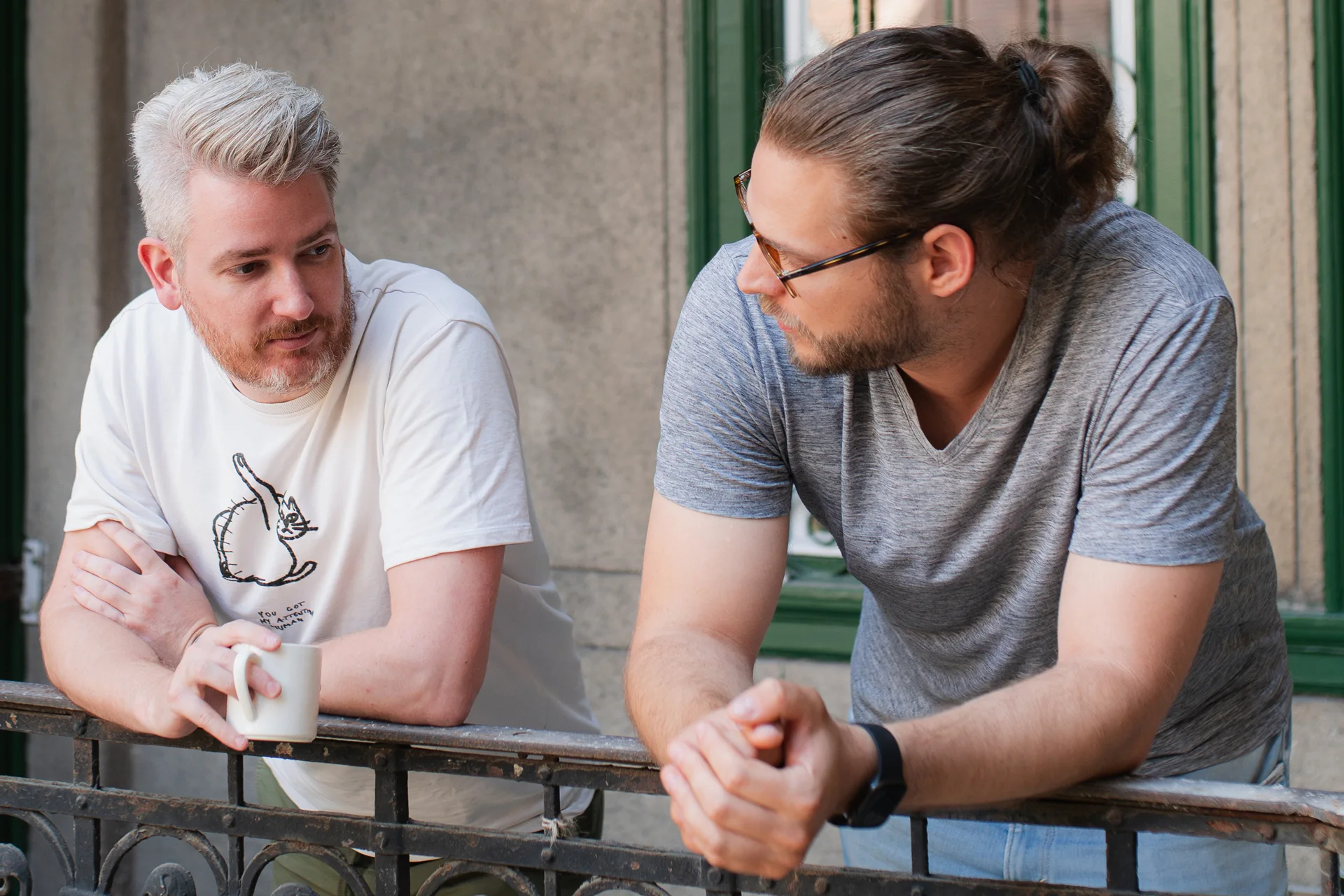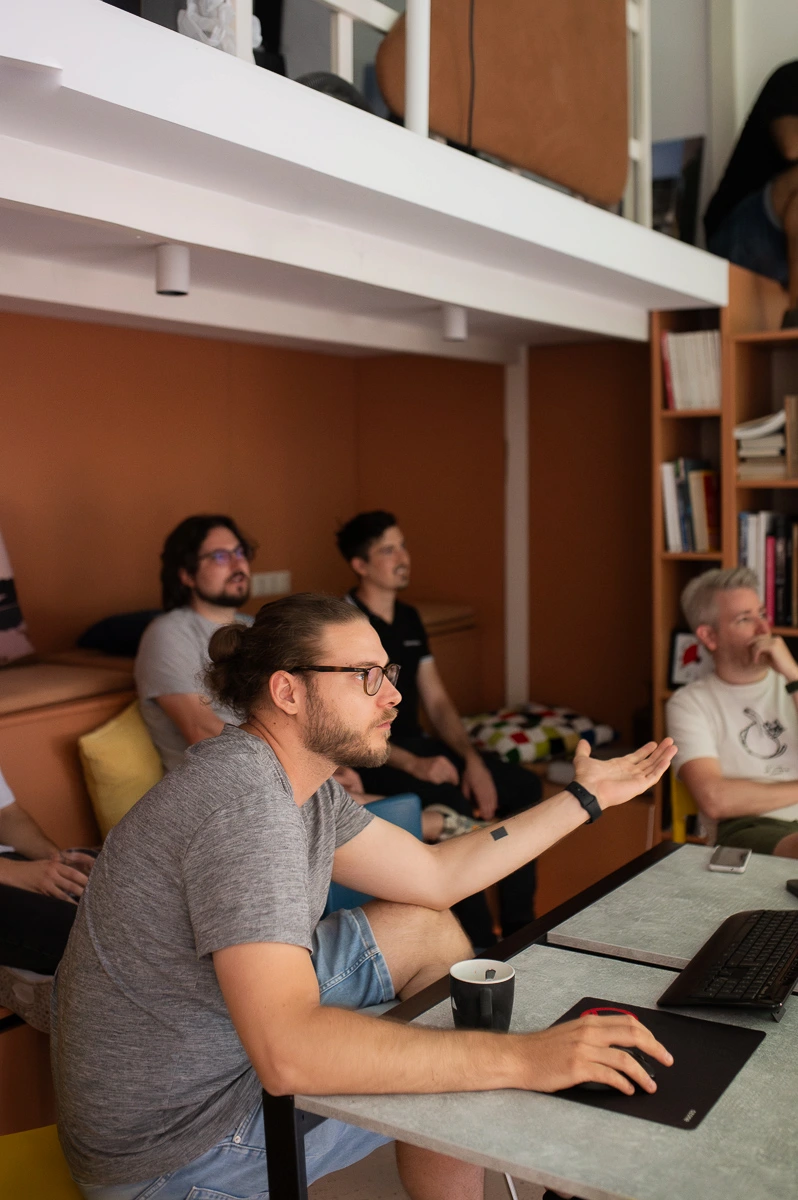Every architectural design begins with a blank canvas, but despite set workflows, the creative path to the final renderings and presentation we put out rarely follows the same route twice. Instead, the process is profoundly shaped by who we’re collaborating with, particularly by the size and structure of the architectural studio on the other end.
Key takeaways:
• Small architectural firms often pour personal passion into a few key images and need visualizations that communicate their vision precisely. Larger firms, with their multi-layered decision chains, approach visualization through structured briefs, internal reviews, and shared responsibility across teams.
• Large architectural offices have the resources to experiment, iterate, and refine ideas without risking the entire pitch. Smaller studios move faster, make quicker decisions, and often embrace riskier ideas, resulting in design narratives that feel sharper.
• Small architectural firms benefit from adopting the organizational discipline of bigger companies, clear briefs and defined scopes. Large teams, in turn, gain from the decisiveness, storytelling clarity, and early-phase creativity typical of small ateliers. When these strengths merge, the visualization process becomes faster, clearer, and more impactful.
Two worlds, one vision
According to a recent study made by the Architects’ Council of Europe, nearly 70% of architectural practices in Europe are solo or very small offices, while in the US, 75% of architecture firms have fewer than 10 employees. With different manpower comes different capabilities: in our own experience, small studios handle less than two to three projects a year, while large firms may juggle over a dozen. That difference can fundamentally alter how they approach competitions and presentations—and how we, as a visualization studio, can and should support them.
Whether it’s a boutique team of five entering a design competition or a global powerhouse preparing a billion-euro development, we’ve had the privilege of partnering with both—and we’ve seen firsthand how differently these collaborations unfold. While the end result might be just as striking, the road there often depends as much on studio size as on creative vision. To better understand how these dynamics play out, we spoke with Bence Falussy, ZOA’s Head of Art, and Róbert Andrékó, a lead CGI artist, both of whom have worked closely with global clients across the full spectrum.
Different ways to collaborate
The most obvious difference is the approval process. In large, international firms, architectural visualization, and any other task typically passes through multiple layers of decision-making. One team sets the brief, another reviews the drafts, and a final voice gives the green light. This structure can create delays, but it also allows for more exploration. When several stakeholders are involved, bold concepts often get softened or rationalized away, not out of resistance, but because the process values consensus over experimentation.
Due to their financial stability, large studios aren’t forced to hit a home run with every pitch, which gives them more freedom to experiment with bold ideas or adjust narratives mid-stream.
Smaller ateliers, by contrast, are more focused. They often bet everything on a single image or a very small set of images, which need to sell a vision precisely and convincingly. Since there’s little room for failure, these studios typically look to us not for exploration, but for clarity: make the vision beautiful and make it understood. Oftentimes, our render makes an impact well before it’s seen by a committee because, as Róbert puts it, “when their vision materializes before their eyes, a small studio might fall back in love with their project when they see our render. That’s part of our job—to give them that moment.” This emotional attachment is something we see more often in smaller studios: the rendering isn’t just a visual—it’s a milestone, a personal and creative validation.
Róbert also points out that despite their stricter needs, smaller studios don’t always play it completely safe as they’re often led by architects who still have a student’s courage, unconstrained by corporate expectations. They might not win every pitch, but sometimes that’s not even the point. Sometimes, they simply want their creativity and ideas to be seen in the best light possible. And from an artist’s standpoint, these small-scale projects bring a unique kind of excitement. “They’re often more human in scale,” Róbert says, “which means we get to zoom in on the little things—textures, materials, how the light hits a doorway. Or even showcasing clearly where the doorway even is. It’s a chance to get lost in the fine details and create images that feel intimate and real.”
Relationship dynamics and workflow realities
At ZOA, we aim to maintain a personal relationship with every client, whether it’s a two-person outfit or a firm with offices across continents. But how that relationship plays out often depends on the architecture studio’s internal structure. “The difference isn’t in attitude—it’s in how things are organized,” explains Bence.
“With independent firms like the Dutch architectural team VenhoevenCS—whom we’ve previously had a project together with, we work directly with a director who runs the show, making the process faster and more hands-on.” Besides quickness, Róbert adds that “there’s a shared sense of ownership. We’re not just executing; we’re figuring things out together.” That immediacy allows room for experimentation. On the other hand, Bence says that “large firms usually have internal visualization teams, comprehensive briefs, and a clear chain of command.” This raises an important nuance: our collaborations with large studios often include their in-house visualization teams—not as competition, but as co-creators. We’re brought in when there’s a need for perspective, capacity, or speed beyond what their team can cover internally. They require a different kind of precision, “expecting us to be just as organized as they are,” Róbert adds. “The workflow we’ve built over our 20 years really shines here. It lets us plug into complex systems, deal with layers of approvals, and still hit the deadline.”
Interestingly, sometimes it’s not the studio size, but the project type that shapes the nature of the collaboration. All that being said, creative energy doesn’t solely hinge on firm size. “We’ve had huge international teams where one project lead completely transformed the workflow,” Bence notes. It always comes down to the manager on the other side. A strong project lead can create intimacy and agility even within a large organization. That’s something senior architects should note—assigning the right person to lead external collaborations can make or break the project’s success. A good example is our collaborations with rockstar firm UNS. Despite the scale of the studio, our projects with them became artistic benchmarks for us internally. This is a result of having worked with one of their project leads for years.
And sometimes, the stars align: a major studio commissions us for a small-scale project. Like in the case of the Le Rosey boarding school, where Snøhetta brought their remarkable design sentiments to a more tangible and small-scale building, that Bence defines as “a house, really.” Róbert adds: “We get the resources and clarity of a big team, with the freedom and flexibility of a small one to create something truly special.” This kind of hybrid setup—big studio, small project—can be a sweet spot: focused creativity with institutional backing.
Learning from each other
On the topic of whether small and large studios can learn from each other, Róbert and Bence are in complete agreement: definitely. Small architecture studios often thrive on creativity, agility, and personal connection to each project. However, there’s much they can learn from the operational maturity of larger firms. One of the most valuable lessons is the importance of structured briefing and defined feedback cycles, which are often criticised when visualization studios propose to architects who are looking for assurance for unlimited comment rounds, usually leading to inattention and comfort. Larger teams typically enter a project with clear documentation, scope alignment, and communication protocols that reduce friction later in the process. For small studios, adopting even a lightweight version of these practices can help minimize misunderstandings, streamline decision-making, and enhance client confidence, especially under tight deadlines or in high-stakes competitions.
In contrast, large architecture firms can benefit by borrowing the decisiveness and narrative clarity that small studios are known for. Smaller teams often move faster because fewer people make decisions, and their design narratives tend to be sharply focused because every image and moment must count. Big studios sometimes suffer from overly layered structures, which dilute ideas or slow down processes. Learning to simplify early-phase collaboration, empower smaller task forces, and allow room for early creative risk can unlock new energy within even the most structured organizations.
In essence, reducing unnecessary complexity—especially during early feedback rounds—not only speeds things up but also creates space for bolder, more cohesive creative output. When studios of any size take cues from each other’s strengths, the result is often better storytelling, more adaptive workflows, and ultimately, more impactful architecture and presentations.
For us, the key to success lies in balancing structure with trust. Our workflow wasn’t designed to limit creativity but to support it, whether the client is an ambitious young outfit or one of the most respected names in architecture. When the process works, the results speak for themselves. Because ultimately, regardless of size, our shared goal is the same: to create a visual that captures not only what a project is, but what it could be.
For press or business inquiries, please email us at hello@zoa3d.com.

